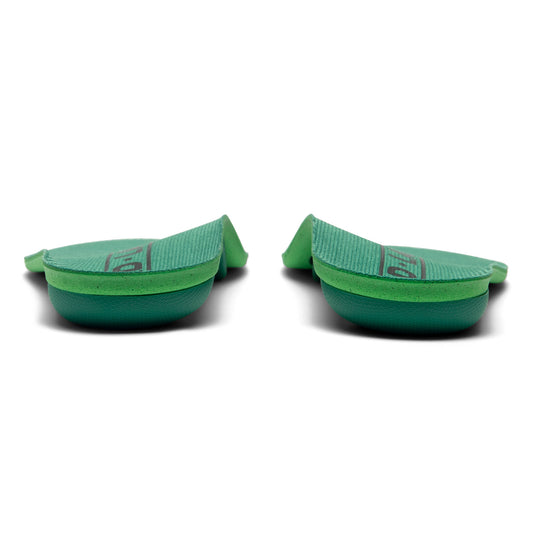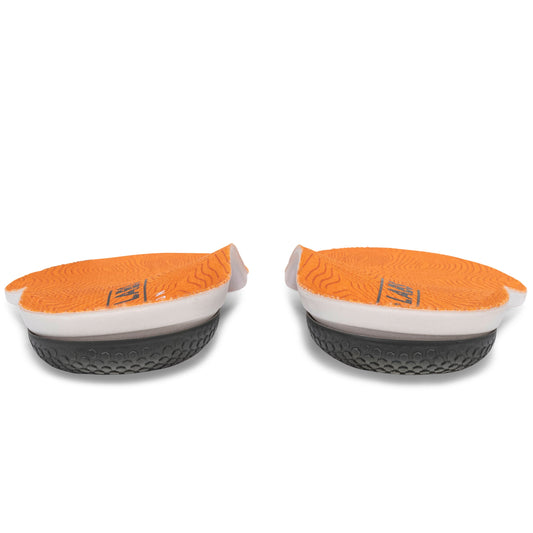-
Ramble Insoles
Vendor:Regular price $ 65.00Regular priceUnit price per -
Ramble Short Insoles
Vendor:Regular price $ 55.00Regular priceUnit price per -
Ramble Thin Insoles
Vendor:Regular price $ 60.00Regular priceUnit price per$ 0.00Sale price $ 60.00For shoes with thin removable inserts -
Ramble Insole Kit
Vendor:Regular price $ 85.00Regular priceUnit price per -
Pace Insoles
Vendor:Regular price $ 80.00Regular priceUnit price per -
Pace Short Insoles
Vendor:Regular price $ 70.00Regular priceUnit price per -
Pace Thin Insoles
Vendor:Regular price $ 75.00Regular priceUnit price per -
Pace Wide Insoles
Vendor:Regular price $ 80.00Regular priceUnit price per -
Pace Insole Kit
Vendor:Regular price $ 100.00Regular priceUnit price per -
Run Insoles
Vendor:Regular price $ 85.00Regular priceUnit price per
-

Free US Shipping
The cure for your flat feet or overpronation delivered for free.
-

90 Days to Decide
If you don't love them within 90 days, return them for a refund.
-

HSA/FSA Eligible
We accept FSA and HSA cards at checkout.
-

APMA Approved
Tread Labs orthotic insoles have been granted the American Podiatric Medical Association's Seal of Acceptance.

Why Choose Tread Labs Insoles for High Arches and Supination?
- Extra High Arch Support: Tread Labs is the only brand that offers extra high arch support, a game-changer for people with especially high arches. This level of support helps distribute pressure evenly across the foot, reducing the risk of foot fatigue, ankle pain, and stress fractures.
- Firm, Medical-Grade Support: These insoles are designed with firm arch support, which is critical for stabilizing high arches and promoting proper foot alignment. This reduces strain on your feet, knees, hips, and back, making every step feel more balanced.
- Deep Heel Cup for Stability: The insoles feature a deep heel cup that cradles the heel, absorbing shock and helping prevent the outward rolling associated with supination. This provides greater stability and reduces the risk of ankle sprains.
- Long-Lasting Durability: Built with a modular system, Tread Labs insoles let you replace just the top cover, so you can enjoy long-lasting support without needing to buy entirely new insoles.
Proven Results
-
These are a perfect fit for my x-high arches
Get Pace Insoles⭐⭐⭐⭐⭐
"These are the perfect insole for me & I've been searching a long time to find you...glad I finally did!"
— Sarah R, Verified Buyer | Nov 2024 -
Best before prescription orthotics
Get Pace Insoles⭐⭐⭐⭐⭐
"Love these insoles. They saved my feet and without them I’d be walking a lot less. I’ve tried other insoles to help with my high arches but none have been as impactful and good fitting as these."
— Chad P, Verified Buyer | Nov 2024 -
Excellent arch support for my high arches.
Get Pace Wide Insoles⭐⭐⭐⭐⭐
"They came in wide with different heights for the arch which i have not seen anywhere. I will be buying a second pair."
— Scott O, Verified Buyer | Nov 2024
Insoles for High Arches FAQs
What kind of support do high arches need?
The best thing you can do for high arches is properly support them. That means using insoles made for high arches. Insoles will relieve excessive pressure on the ball and heel of your foot by evenly distributing your body weight. That, in turn, will cushion the impact when you walk, run or jump.
What are the symptoms of high arches?
High arches are exactly what they sound like. The arch of your foot is very pronounced and doesn't touch the ground when you stand evenly on both feet. This puts added pressure on the ball and heel of your foot.
You may have heard high arches referred to as "pes cavus," which means "hollow foot" in Latin. If you take the wet footprint test, you'll see why. The impression of your wet footprint is just your heel and the ball of your foot, with a mid-foot that doesn't leave a mark.
How long do Tread Labs insoles last?
Tread Labs insoles are backed by our Million Mile Guarantee. If they ever break or lose their shape, we'll replace them free of charge.





















